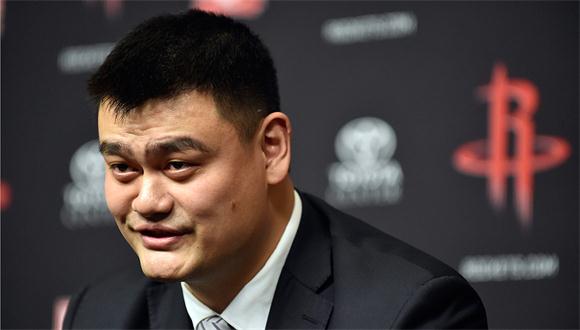The Chinese sports industry underwent profound reforms through 2017.
As Gou Zhongwen, director of the State General Administration of Sports, said, “the national sports governing body launched 23 reform documents, which highlighted the transformation of sports associations and social organizations.”
Specifically, the Chinese Basketball Association (CBA), the Chinese Super League (CSL) and the China Volleyball League (CVL) have begun reforming their management structure, with the goal of addressing shortcomings in team operation, development, training and facilities and making them more commercially successful.
CBA
CBA Chairman Yao Ming said at a Chinese sports officers meeting that the CBA has completed its development strategy and brand marketing plan, aiming to continue efforts to improve league rules, organizational structure, youth training models, national basketball teams and professional league reforms.
While moving ahead with market-oriented reforms, the CBA (organization) sold a 30% stake to 20 CBA clubs for 8.58 million yuan in April 2017, allowing each of them to increase their shares in the league from 3.5% to 5% as well as to acquire marketing and competitive rights.
Along with the progress, the CBA (league) also changed the schedule of 3 games per week to 1 game every two days for the new season. This means more broadcasting games and more popularity, which contributes to a record sponsorship revenue compared previous seasons. At the same time, clubs like Guangzhou Long-Lions, Tianjin Ronggang Gold Lions and Jiangsu Dragons have made their debut on China’s National Equities Exchange and Quotation (NEEQ), also known as the New Third Board, looking to adopt a market-centered operation model.
CSL
Du Jicai, a senior officer of the Chinese Football Association (CFA), also shared Yao’s ideas on improving the structure of China’s top football governing body.
As one of the most commercially successful sports league in China, the CSL has adopted a series of reform policies. In February 2017, the CFA released new rules to curb clubs’ heavy investment in foreign players and ensuring enough Chinese U23 players make it on the pitch. In December 2017, China’s football governing body made the U23 policy much stricter, which caused a stir in the Chinese football industry.
The policy changes have contributed to more rational transfer deals for CSL clubs, as they began to use the rent-to-buy model, or free agent deals, instead of the usual big-money signings during the 2017 summer transfer period. According to Transfermarkt, the CSL was ranked 12th place regarding summer transfer expenditure last year. In contrast, Chinese U23 players became favorites for CSL clubs before the opening of the 2018 season of the winter football transfer period.
Some experts believe that the new policies will hurt the CSL viewing experience, which is part of the reason that China Sports Media (CSM) attempted to re-negotiate the 8-billion-yuan broadcast deal with the CSL Company. However, sponsors showed positive outlook toward the new policies, as Ping An Insurance, whose deal of the last circle was valued at 600 million for 4 seasons, extended a 1-billion deal to continue its title sponsorship for the CSL over the next 5 seasons.
CVL
China Volleyball League (CVL) also attempted to rebrand itself into a commercially successful league, bringing in new measures for teams, adjustments to the league’s schedule, hiring overseas players and implementing a new entry system for clubs in the 2017/18 season.
According to media reports, iRENA, the league’s official commercial partner, has invested nearly 100 million yuan for commercial exploitation in the new season. As expected, 10 companies including PEAK Sports have become commercial partners of the 2017/18 CVL season, while a dozen media platforms like Suning Sports have acquired the broadcast rights to the league, which may help the league generate 30 million yuan in new media broadcasting revenue.
As shown in an official report on December 28, 2017, the first 10 rounds of women’s volleyball and first 8 rounds of men’s volleyball attracted 37 million unique users tuning in to live broadcasts, bringing total views to 256.3 million. Most notably, the kick-off of the women’s volleyball match between Beijing and Shanghai has become the most watched match of its kind, with a total of 6 million online viewers.
Conclusion
Although China’s sports reforms still have a long way to go to make a difference, we believe that with more sports professionals like Yao Ming taking the responsibility of Chinese sports reform, the country’s sports leagues will become more independent and market-oriented in the near future.
Proofread by William Logsdon
